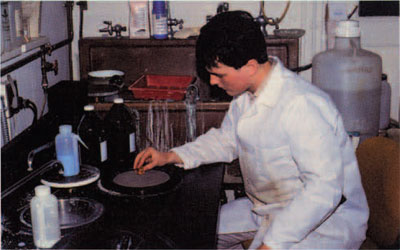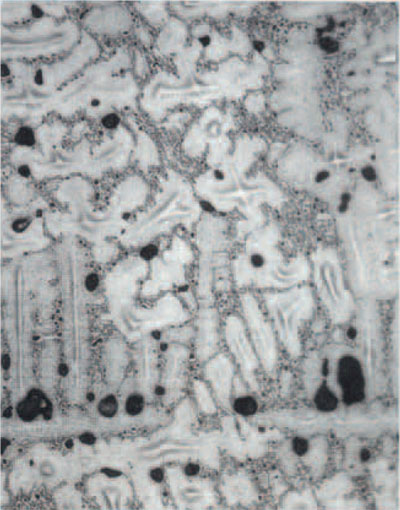
An American college student’s famous stumble over a tree root that led to the discovery of the Bronze Age culture of Ban Chiang also led to a complete revision of then-current ideas about the technological sophistication of prehistoric Southeast Asians. Before the 1970s, the prevailing scholarly opinion held that the earliest metal use in Southeast Asia was no older than ca. 500 BC. Southeast Asia was considered rather a technological backwater.
Excavations at Ban Chiang were conducted by the late Chet Gorman of the University of Pennsylvania Museum and Pisit Charoenwongsa of the Thai Department of Fine Arts. This work, plus survey and excavation at sites such as Non Nok Tha, Ban Pak Top, Ban Tong, and Don Kiang, have demonstrated that Southeast Asia had a sophisticated metallurgical industry as early as the first half of the 2nd millennium BC. This is over a thousand years earlier than was previously suspected and long before traces of any societies more complex than simple egalitarian villages show up in the archaeological record of the area.
For the last two years, I and Dr. Sam Nash, a retired metallurgist and Museum volunteer, have been conducting laboratory investigations of the Ban Chiang metals. We looked at 176 samples of material ranging in date from ca. 1800 BC to AD 300. The artifacts examined include bracelets, rings, and anklets, wires and rods, spearheads, axes and adzes, hooks, blades, little bells, flat pieces of unidentifiable use, and amorphous lumps that could well be drips and splashes from smelting or casting metal.
Metal is a crystalline substance that, fortunately for the scientist, retains the traces of everything that has been done to it. These traces are revealed under an optical microscope after a sample from the artifact has been set into a mount of hard resin, ground and polished up to .05 microns, and etched with an acidic agent. For example, if the artifact has been cast of bronze with no further working, we can see dendrites, or long thin arms of copper-rich metal. With a cast artifact that has been allowed to cool slowly, the dendrites disappear and are replaced by grains; and if the artifact has been shaped by a hammer afterward, the grains will be flattened and streaked with strain lines. Casting, working, reheating, other stresses, all are revealed under the microscope, and the millennia spent underground are not enough to erase these traces.

We also sent 24 samples to the Bartol Research Institute at the University of Delaware to discover what alloying elements and impurities they might contain. With the addition of 20 analyses performed in 1991, we had enough data to obtain some idea of changes in alloy use through time and across various artifact classes. We also performed Vickers hardness testing on 37 samples. This test involves driving a microscopic diamond tip into a sample using a fixed pressure for a certain number of seconds and then measuring the size of the resulting pit: the bigger the pit, the softer the material. Since copper and bronze become harder with hammering and softer with heating (annealing), the hardness is a clue to how much treatment the artifact received, and how much the ancient makers valued hardness in their tools and ornaments.
We found that the ancient smiths of Northeast Thailand much preferred bronze to pure copper even in the Early Period (2100-900 BC); only 4 of the 44 artifacts were of unalloyed copper. (This lack of evidence for exclusive early copper use suggests that the technology of metal working came already developed from some other area.) Bronze can be made much harder than copper; in fact, a well-hammered to % tin bronze is considerably harder than pure iron. But our hardness tests show that the bronze used in the Ban Chiang area was not much harder than the copper. This is true even of the spearheads and axes/adzes. Why go through the complex process of smelting tin and adding it to the copper, then? It seems possible that bronze, paler and more gold-like than pure copper, was esteemed for its color rather than its ability to be hardened.

Color might also have been the governing principle behind the high-tin bronzes produced in the Late Period (300 BC-AD 300). These bronzes are extremely hard, so hard and brittle that they are unworkable at room temperature. We found many wire artifacts made of this alloy; most seem to have been elaborate necklaces. They would have been a pale silvery-gold color, and this might have been what was valued despite the difficulty of production.
Microscopic analysis of ancient metals can do more than just reconstruct technical history. By observing the details of manufacture and treatment, we can assess not only the technological sophistication of the makers, but the contacts they may have had with outside cultures, and some of the values and ideology surrounding metals and the use of metals. Laboratory analysis of these materials can open a surprising window on aspects of a society beyond simple manufacture of goods.
Elizabeth Hamilton
Post-Doctoral Research Assistant, Ban Chiang Project
